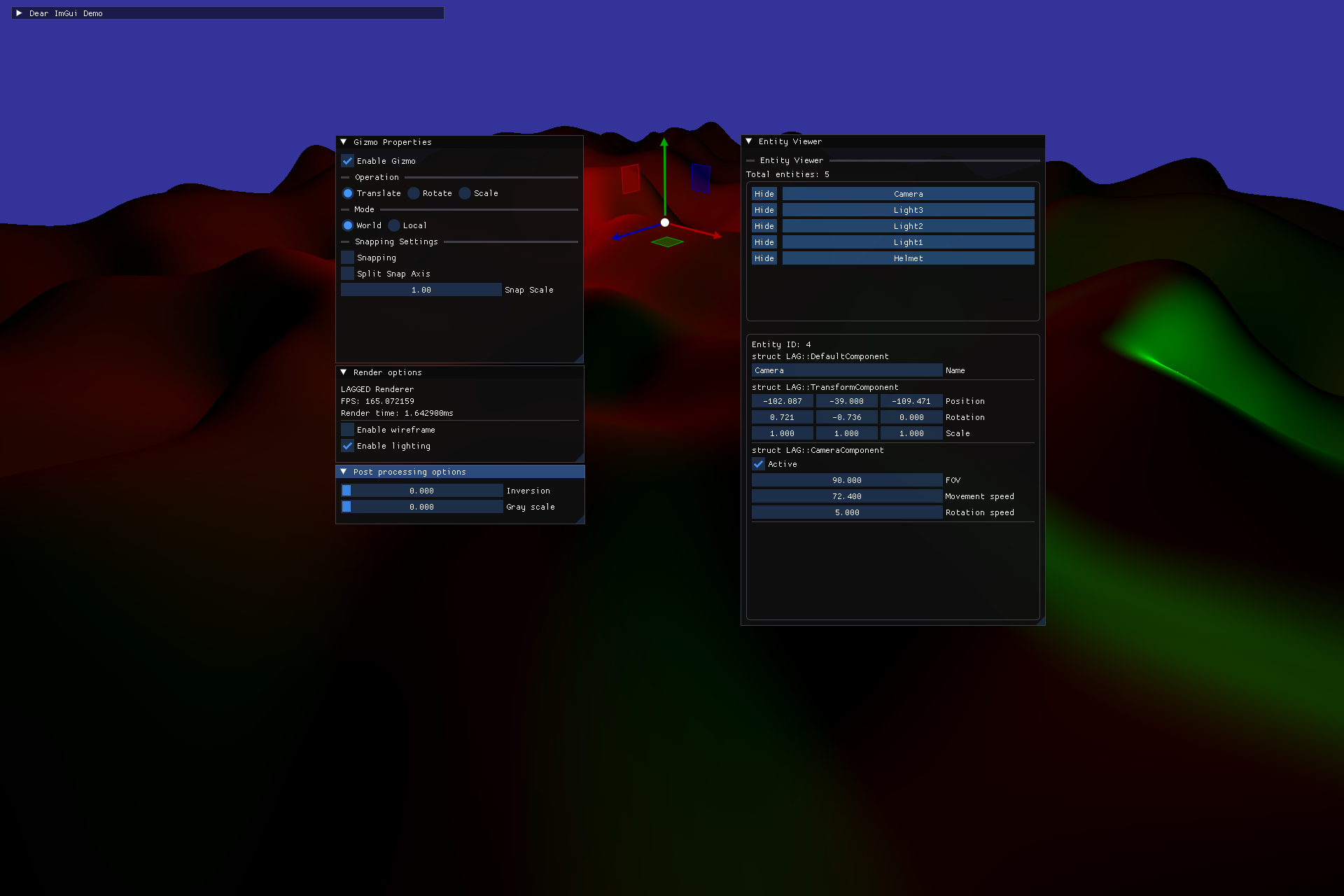LAGGED
Personal project for creating a general-purpose engine
Now available!
The LAGGED repository is public on GitHub and can be accessed by
anyone.
LAGGED on GitHub
Quick overview
About this project
LAGGED (which stands for 'Learning About Graphics and Game
Engine Development') is my custom game engine project aimed at
exploring various aspects of graphics and engine development. In
this project, I’ve been researching and implementing procedural
terrain generation, reflection using EnTT Meta and GLTF model
support. The renderer uses OpenGL. Although I'm trying to write
a general-purpose engine, my goal is to implement a procedural
city generator that players can explore.
This project is currently in development.
My contributions to the project
Since this is a personal project, everything has been done
by me. A brief list of systems that have been implemented
will be listed below:
 A screenshot of some of the editor tools that are
currently available
A screenshot of some of the editor tools that are
currently available
Lorem ipsum dolor sit amet, consectetur adipisicing elit, sed do eiusmod tempor incididunt ut labore et dolore magna aliqua. Ut enim ad minim veniam, quis nostrud exercitation ullamco laboris nisi ut aliquip ex ea commodo consequat.
Lorem ipsum dolor sit amet, consectetur adipisicing elit, sed do eiusmod tempor incididunt ut labore et dolore magna aliqua. Ut enim ad minim veniam, quis nostrud exercitation ullamco laboris nisi ut aliquip ex ea commodo consequat.
Lorem ipsum dolor sit amet, consectetur adipisicing elit, sed do eiusmod tempor incididunt ut labore et dolore magna aliqua. Ut enim ad minim veniam, quis nostrud exercitation ullamco laboris nisi ut aliquip ex ea commodo consequat.
Lorem ipsum dolor sit amet, consectetur adipisicing elit, sed do eiusmod tempor incididunt ut labore et dolore magna aliqua. Ut enim ad minim veniam, quis nostrud exercitation ullamco laboris nisi ut aliquip ex ea commodo consequat.
Lorem ipsum dolor sit amet, consectetur adipisicing elit, sed do eiusmod tempor incididunt ut labore et dolore magna aliqua. Ut enim ad minim veniam, quis nostrud exercitation ullamco laboris nisi ut aliquip ex ea commodo consequat.